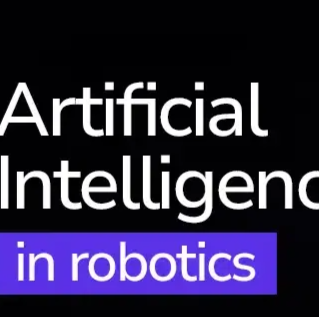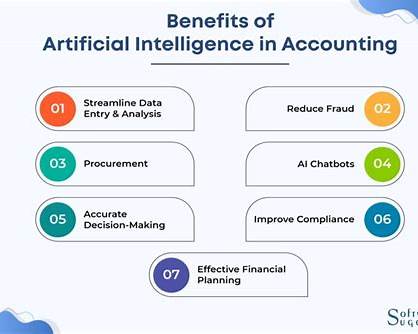What is Robotics?
Robotics is an interdisciplinary branch of engineering and science that deals with the design, construction, operation, and use of robots. Traditionally rooted in mechanical and electronics engineering, robotics today incorporates advanced computer science principles, especially Artificial Intelligence (AI), to build smarter, more autonomous machines.
Modern robots go beyond pre-programmed routines. With AI integration, robots are now capable of:
- Interpreting data from their environment
- Learning from past experiences
- Making intelligent decisions
- Adapting to new tasks and dynamic conditions
This evolution has enabled robots to venture beyond static assembly lines into dynamic environments like hospitals, homes, and disaster zones.
Role of Robotics in Artificial Intelligence
Artificial Intelligence and robotics are two domains that are increasingly intertwined. While robotics provides the physical structure and movement, AI delivers the "brain" that allows machines to think and learn.
Key aspects of their relationship include:
- Integration of Machine Learning (ML): AI allows robots to analyze data, recognize patterns, and improve performance without human intervention.
- Computer Vision & Natural Language Processing (NLP): Robots equipped with AI can see (object detection, facial recognition) and communicate with humans using spoken language.
- Adaptive Learning: Unlike rule-based automation, AI-powered robots adapt to changes in the environment or task requirements.
- Sensor-Based Intelligence: AI helps robots process data from cameras, LiDAR, ultrasonic sensors, and more to make real-time decisions.
This fusion forms the foundation of Robotic Artificial Intelligence (RAI)—robots that are not just automated, but intelligent and responsive.
How AI is Used in Robotics
AI enriches robotic functionality in various transformative ways:
- Autonomous Navigation:
- Used in self-driving vehicles and drones, AI helps robots plan routes, avoid obstacles, and reach destinations with minimal human input.
- Task Automation & Optimization:
- From warehouse sorting to surgical procedures, AI enables robots to execute tasks with high precision, often surpassing human capabilities in speed and accuracy.
- Predictive Maintenance & Decision-Making:
- Robots powered by AI can monitor their own health and predict component failures, minimizing downtime and ensuring safety.
- Human-Robot Interaction:
- With NLP and emotion recognition, robots can understand and respond to human emotions, commands, and expressions, making them suitable for caregiving and customer service.
- Learning from Experience (Reinforcement Learning):
- Robots learn optimal actions in a trial-and-error manner, improving efficiency over time in complex environments.
How Robots and AI Work Together
The collaboration between AI and robotics results in machines that not only act but also think. Here’s how they complement each other:
- Hardware (Robotics): Provides the structure—arms, wheels, sensors, grippers.
- Software (AI): Provides intelligence—decision-making, perception, learning.
- Control Systems: Bridges the gap between AI algorithms and physical motion.
- Environment Feedback Loop: Continuous data flow allows real-time adaptability.
This synergy is the backbone of applications such as autonomous delivery robots, surgical assistants, robotic pets, and industrial co-bots (collaborative robots).
Benefits of AI in Robotics
1. Enhanced Capabilities
AI amplifies the complexity and variety of tasks a robot can handle, enabling flexible automation in unpredictable environments.
2. Increased Efficiency and Productivity
Robots reduce human errors and operate 24/7, boosting throughput in industries like manufacturing, warehousing, and agriculture.
3. Improved Safety
AI allows robots to perform hazardous tasks—like bomb defusal, nuclear plant maintenance, or pandemic response—reducing risk to human life.
Applications of AI in Robotics
AI-powered robots are revolutionizing nearly every sector:
- Manufacturing: Precision assembly, defect detection, predictive maintenance.
- Healthcare: Robotic surgeries, elder care assistants, hospital logistics.
- Agriculture: Autonomous tractors, crop monitoring drones, automated harvesting.
- Retail & Warehousing: Inventory management, automated picking, smart delivery.
- Space Exploration: NASA’s Perseverance Rover uses AI to navigate Mars terrain.
- Security & Defense: Surveillance drones, border patrol robots, autonomous submarines.
Real-Life Examples of AI-Powered Robots
- Boston Dynamics’ Spot: A four-legged robot used in industries from oil rigs to construction for inspection and monitoring.
- Da Vinci Surgical Robot: Offers enhanced vision and precision in minimally invasive surgeries.
- Amazon Robotics: Streamlining warehouse operations with AI-driven mobile units.
- Xiaomi CyberDog & Tesla Optimus: AI-infused humanoid robots aiming at domestic and industrial tasks.
These examples reflect the growing sophistication of robots, which are increasingly becoming indispensable tools in the modern world.
Conclusion: A Future Driven by Intelligent Machines
As Artificial Intelligence continues to evolve, its integration with robotics is set to redefine the boundaries of what's possible. From enabling robots to learn like humans to deploying them in outer space or hospital ICUs, the AI-robotics symbiosis is an unstoppable force driving global transformation.
In the years to come, we can expect even more breakthroughs—robots that understand context, make ethical decisions, and perhaps even develop emotional intelligence. While challenges remain in areas like ethics, privacy, and employment dynamics, the momentum of AI in robotics promises a future of unprecedented possibilities.
Source:geeksforgeeksChat GPT








